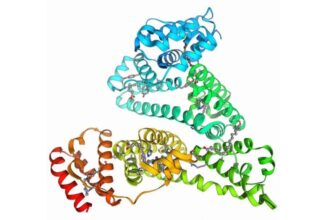Casting in manufacturing refers to producing solid metal or plastic parts by shaping them in a molten stage using a mold cavity. This method allows manufacturers to produce a variety of products for multiple industries. Moreover, its flexibility with size, volume, and complex geometrical features are widely favorable for metal parts.
Continue reading to know “what is casting of metal” in detail, including the working principle, process, potential defects, and applications.
What is Casting of Metal? Definition
Metal pouring to mold
Metal casting is an old manufacturing process; its history can be traced back to 4000 BC, known as the bronze age. At that time, people used to cast essential cookware and tools. With continuous evolution, casting technology is in the shape of today, where automated machines fill the complex mol cavity to produce identical 3D parts in large volumes.
The mold-containing cavity can come in different forms, machined hard mold, sand mold, and ceramics mold. They contain cavities with the exact negative shapes of a “pattern”, which is the physical model of the desired part.
Working Principle of Metal Casting
The working principle of metal casting revolves around “solidification and phase changes”. Raw metals are liquefied and poured into a mold cavity, where they flow and take the detailed shape cavity after solidification.
Metallurgically, it is the process of directional solidification to convert liquid metal into fine-grained objects. This approach kept intact original properties or even enhanced them. Additionally, it also minimizes the risk of shrinkage & porosity defects in metal casting parts.
The Process of Metal Casting
process of casting
The process of metal casting all starts with creating a pattern that replicates the exact dimensions and geometrical features of the desired part. Then, creating the mold based on the pattern, followed by pouring the metal into mold-cavity and solidification. The solidified part is typically taken out with the help of ejector pins. However, other auxiliary tasks like material selection and process control are also part of the metal casting process.
Let’s take a look at its typical steps;
- Creating the Mold for Casting
Based on which type of casting method you are using, create a mold meeting all specifications of the pattern. For sand casting, you can use a mixture of sand, binders, and other supporting elements. For die casting, you might need to machine tool steel, and so on.
- Process Setup
Next, set up your mold on a machine with a pouring and ejection arrangement. Based on melting point and flow characteristics of the metal, decide whether the metal is directly poured into the cavity with the attached system or melted separately and poured into the cavity.
- Melting and Pouring the Metal
Choose a suitable metal and melt it in a furnace at a pre-determined temperature, then pour and fill the mold cavity. Here, controlling the cooling rate is important to minimize the defects as it starts to change phase.
- Solidification and Ejection
In this stage, the liquid metal solidifies and captures the exterior details of the die cavity. Solidification occurs through nucleation (solid particles form within the liquid) and crystal growth (particles grow until the entire volume solidifies). Once fully solidified, eject the part carefully and perform post-processing operations if necessary.
Types of Metal Casting
There are many types of metal casting and differences in mold formation, mechanism, and application preferences. The table below outlines key types and their characteristics;
| Type | Key Feature | Metal Options |
| Sand Casting | Sand molds, cost-effective | Cast iron, aluminum, brass |
| Die Casting | High-pressure precision | Aluminum, zinc, magnesium |
| Gravity Die Casting | Uses gravity to fill molds | Aluminum, magnesium |
| Continuous Casting | Produces long, uniform sections | Steel, copper, aluminum |
| Shell Molding | Resin-sand shells for fine details | Cast iron, steel, bronze |
| Centrifugal Casting | Rotating molds for hollow shapes | Cast iron, steel, alloys |
| Plaster Casting | Smooth finish with plaster molds | Aluminum, zinc, magnesium |
| Vacuum Casting | Air-free molds for quality | Titanium, aluminum, steel |
| Squeeze Casting | Combines casting and forging | Aluminum, magnesium, steel |
What Are the Casting Defects and How to Overcome Them?
Defective casting parts
Although metal casting is beneficial for high-quality parts, there are some possible risks of defects in metal casting. Most of the defects are associated with die tooling, casting variables, and cooling control.
- Cold Shut
A cold shot refers to an incomplete filling of the die cavity that causes dimensional errors and porosity in the final parts. It especially happens in complex molds, where a molten flow stream can be mismatched and fused at the meeting point.
Prevention: Ensure sufficient flow, optimize gate design, and control pouring speed.
- Material Shrinkage
The phase changes can lead to volumetric contractions of liquid metal and cause material shrinkage. Especially, edges are more prone to shrinkage. There is a risk of internal shrinkage as well.
Prevention: Apply metal padding for large size and control the directional solidification precisely.
- Gas Porosity
Porosity defects are associated with the gas or air trapped inside the cavity that comes along with the molten flow. The trapped air occupies space and forms voids and pinholes after solidification.
Prevention: Ensure there is no air entrapment and contamination of gases in liquefied metal.
- Thermal Cracks
The melting and cooling of metal can form thermal stress during solidification, which forms internal or external cracks.
Prevention: Improve collapsibility of core and mold.
- Sinks Marks
Sink marks are often visible by the naked eye on the surface of casting metal parts, which are mainly caused by defects or errors in the cavity wall. Die overheating, and low pressure can also cause these marks.
Prevention: Optimize design and focus on better controlling mold/die heating temperature.
- Other Defects
Besides these, other defects include buckles, rat trails, buckles, swell, deformation, and cracks.
What Parts and Products are Made with Metal Casting?
Metal casting parts and products can be found everywhere, from our kitchens and bathrooms to advanced machinery components. The capability of producing metal parts in large volumes reduces the cost and also maintains consistent quality.
The following are the common examples of casting parts across industries;
- The automotive engine block, valve covers, transmission parts, etc.
- Couplers, brakes, and other large-sized components for railways.
- Construction machinery parts
- The gas pump, drilling machinery, valves, etc.
- Gearbox, pumping components, fittings, and bases for industrial machinery.
- Kitchen and bathroom fixtures
- Agricultural machinery parts

















